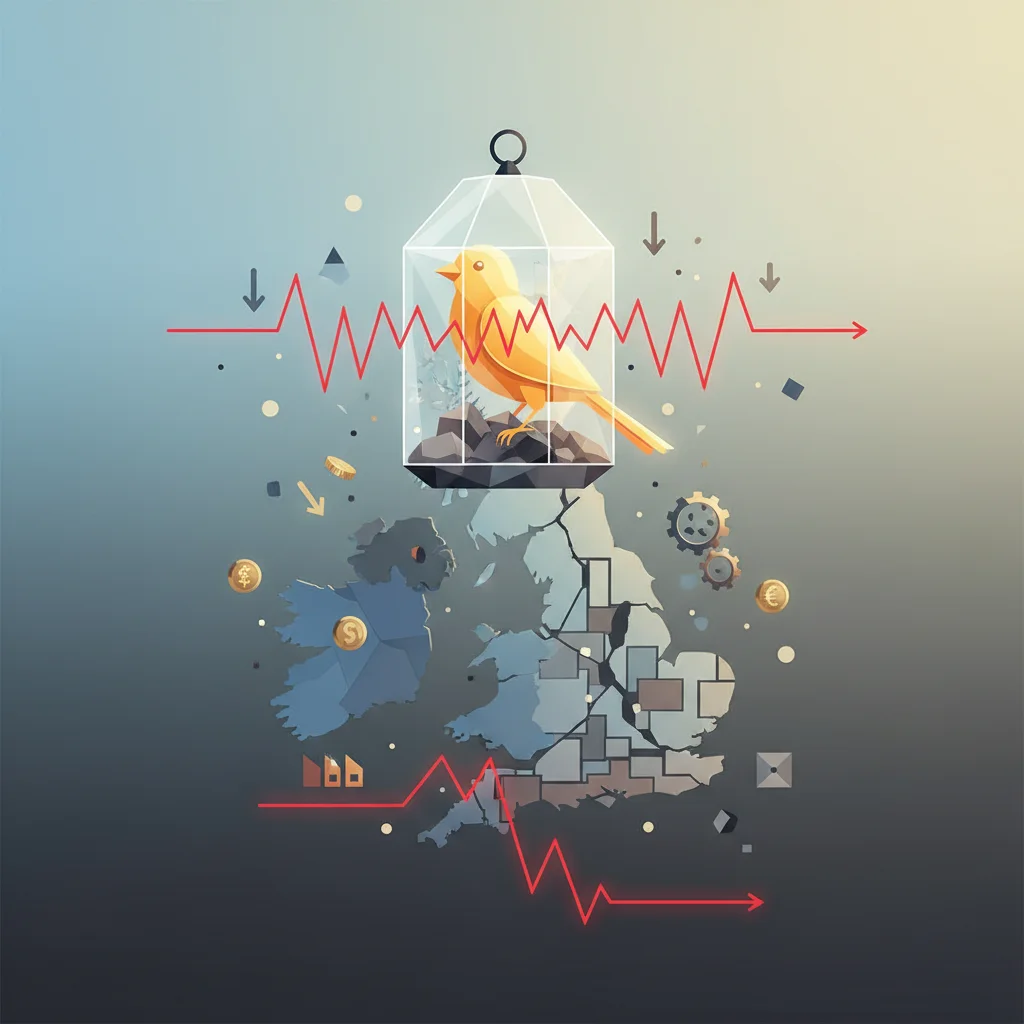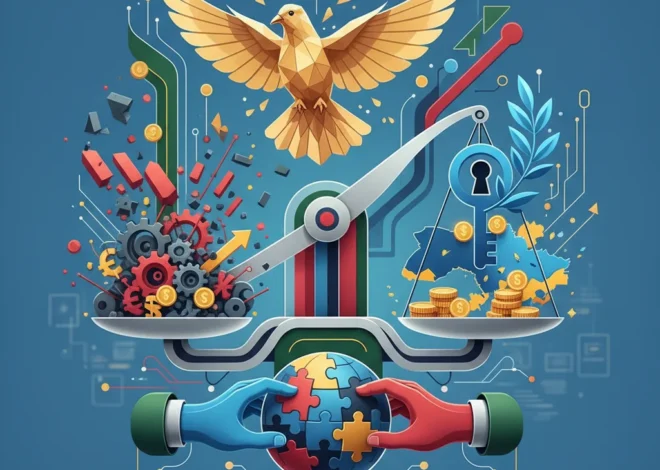
The Canary in the Coal Mine: Why UK Malnutrition is a Critical Red Flag for the Economy and Investors
In the world of high finance and institutional investing, we are conditioned to track a specific set of signals: GDP growth, inflation rates, central bank announcements, and the daily fluctuations of the stock market. These are the traditional barometers of economic health. But what if one of the most potent leading indicators of future economic turmoil isn’t found in a financial report, but in a hospital ward?
A recent, sobering report from the BBC has cast a harsh light on a deeply troubling trend in the South East of England. Doctors and healthcare professionals are witnessing a surge in patients, including children, suffering from malnutrition. One professional shared the harrowing reality: “People tell me they haven’t eaten in days.” While the immediate human tragedy is undeniable, for those in finance, business, and investment, this is a signal that cannot be ignored. It is a canary in the coal mine, warning of systemic weaknesses and future volatility that will inevitably ripple through the entire economy.
This article moves beyond the headlines to dissect the profound economic and financial implications of this social crisis. We will explore how indicators like malnutrition are inextricably linked to consumer spending, fiscal policy, market stability, and long-term investment strategy. For the astute investor and business leader, understanding this connection is no longer optional—it is essential for effective risk management and strategic foresight.
From Kitchen Tables to Trading Floors: Connecting Social Distress to Economic Data
At first glance, a story about food poverty may seem disconnected from the complex world of economics and trading. However, this social symptom is a direct result of tangible economic pressures that have been building for years. The UK has been grappling with a persistent cost of living crisis, where wage growth has failed to keep pace with soaring inflation, particularly in essential goods like food and energy. This isn’t just an abstract economic theory; it’s a reality that is forcing households to make impossible choices.
When a significant portion of the population is struggling to afford basic necessities, several predictable economic consequences follow:
- Crumbling Consumer Confidence and Spending: Consumer spending accounts for roughly 60% of the UK’s GDP. When household budgets are squeezed to the breaking point, discretionary spending is the first casualty. This directly impacts retail, hospitality, travel, and entertainment sectors. A fall in demand leads to lower corporate revenues, reduced profitability, and ultimately, downward pressure on stock market valuations in these areas. Investors heavily weighted in consumer discretionary stocks face significant headwinds.
- Increased Strain on Public Services: The BBC report highlights the impact on hospitals, but the strain extends across the public sector. Increased demand for healthcare, social support, and welfare benefits places an immense burden on government finances. This leads to a difficult fiscal choice: increase borrowing (adding to national debt), raise taxes (further dampening economic activity), or cut spending in other critical areas like infrastructure or education (hindering long-term growth). None of these options are conducive to a robust economy.
- Reduced Labor Productivity: A population suffering from poor nutrition is not a productive one. Malnutrition impacts cognitive function, physical health, and increases absenteeism from work. Over the long term, this erodes the nation’s human capital, leading to a less skilled, less healthy, and less productive workforce—a foundational drag on national economic output. According to The Food Foundation, food insecurity is estimated to cost the UK economy £10.4 billion per year through lost earnings and increased healthcare needs.
These are not isolated issues; they are interconnected threads in a complex economic tapestry. The struggles of a family in Kent are a microcosm of macroeconomic forces that will eventually be reflected in quarterly earnings reports and stock market indices.
The Trillion-Dollar Blind Spot: Is the Private Credit Boom Hiding a Ratings Crisis?
The Macroeconomic Ripple Effect: Why Global Investors Should Pay Attention
The implications of rising malnutrition and food poverty extend far beyond the UK’s domestic economy, influencing international investor sentiment and the country’s position on the global stage.
From a macroeconomic perspective, sustained social distress acts as a powerful brake on GDP growth. Central banks, like the Bank of England, are caught in a difficult position. The standard tool to fight inflation is raising interest rates, but this very action exacerbates the cost of living crisis by increasing mortgage and loan payments, further squeezing household incomes. This creates a policy paradox where the solution to one economic problem (inflation) worsens another (social and economic hardship), leading to a higher risk of stagflation—a toxic mix of stagnant growth and high inflation.
Furthermore, foreign direct investment (FDI) is predicated on stability and a predictable growth outlook. News of deepening social divisions and a struggling populace does not paint a picture of a stable environment for long-term capital investment. It signals potential for social unrest and political instability, increasing the risk profile of UK-based assets. International corporations and sovereign wealth funds factor these social metrics into their country-risk analyses, and a negative trend can lead to capital flight or reduced future investment, impacting the strength of the pound and the overall health of the financial system.
Rethinking Our Economic Dashboard
To truly grasp the state of the economy, we need to expand the dashboard of indicators we monitor. Relying solely on traditional metrics provides an incomplete and often lagging picture of reality. A more holistic approach is required.
The table below contrasts traditional economic indicators with the social health indicators that provide crucial, forward-looking context.
| Traditional Economic Indicator | Complementary Social Health Indicator | What It Tells Investors |
|---|---|---|
| GDP Growth Rate | Food Bank Usage Rates | While GDP shows past output, rising food bank usage is a real-time indicator of declining disposable income and future weakness in consumer-driven sectors. |
| Consumer Price Index (CPI) | Household Debt-to-Income Ratio | CPI measures inflation, but the debt ratio reveals the population’s ability to absorb those price increases. A high ratio signals financial fragility and a high risk of default. |
| Unemployment Rate | In-Work Poverty & Malnutrition Rates | Low unemployment can be misleading if many jobs are low-wage or precarious. Malnutrition rates reveal that even having a job may not be enough to live, signaling poor quality of employment and a productivity crisis. |
| Stock Market Index (e.g., FTSE 100) | Consumer Confidence Index | The stock market can be buoyed by a few large companies, while the confidence index reflects the sentiment of the broader population, offering a better gauge of future mass-market spending. |
By integrating these social metrics, analysts and investors can build a much more robust and predictive model of the economy’s true health and direction.
The Role of Fintech and Innovative Banking in a Stressed Economy
While the situation is dire, the challenges also present an opportunity for innovation, particularly within the financial technology (fintech) and banking sectors. The traditional financial system has often failed to adequately serve those on the economic margins. Technology can help bridge some of these gaps.
Fintech innovators are already developing tools aimed at financial inclusion and well-being. Advanced budgeting apps that use AI to analyze spending habits can help users manage tight budgets more effectively. Platforms that automate access to government benefits and social support can ensure people receive the aid they are entitled to. Some forward-thinking banks are exploring more flexible credit and lending products that move beyond rigid, traditional credit scoring, which often penalizes the very people who need support the most.
There’s even a nascent, though debated, role for technologies like blockchain. Proponents argue it could be used to create transparent and efficient systems for distributing aid from charities or government bodies, ensuring funds reach their intended recipients without being diluted by administrative overhead. While not a panacea, these innovations in financial technology demonstrate a potential pathway to building a more resilient and inclusive economic infrastructure.
For investors, this is a growth area. Companies focused on “fintech for good,” financial inclusion, and tools that enhance personal financial management are not just socially responsible investments; they are tapping into a massive, underserved market and addressing a fundamental economic need. The Trussell Trust, a leading UK food bank network, reported distributing nearly 3 million emergency food parcels in a single year, highlighting the scale of the crisis and the market for solutions.
Conclusion: A Call for a Wider Economic Perspective
The report of malnourished people arriving at hospitals in one of the world’s wealthiest countries is a profound human tragedy. But it is also a critical economic signal that the finance and investment community must heed. It is a manifestation of deep-seated economic stress that will continue to exert a powerful influence on everything from consumer spending and corporate earnings to fiscal policy and stock market performance.
Ignoring such fundamental indicators of social well-being is no longer a viable strategy. We must broaden our definition of economic data to include the health and stability of the population. By integrating social metrics into our financial analysis, we can build more resilient portfolios, make more informed investment decisions, and better anticipate the economic shifts that lie ahead. The canary in the coal mine is singing, and it is imperative that we listen.


